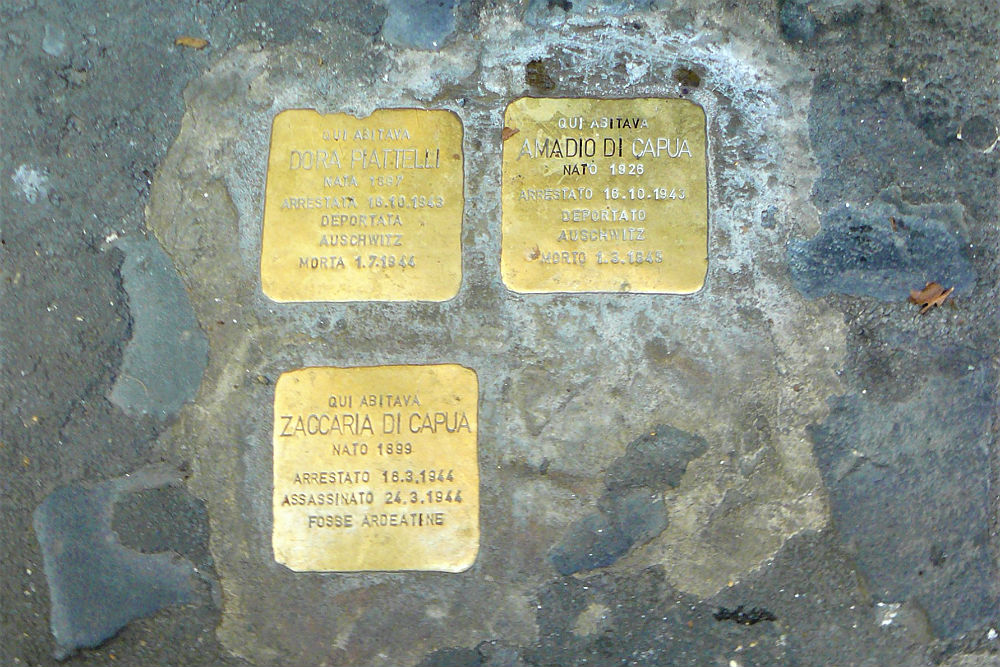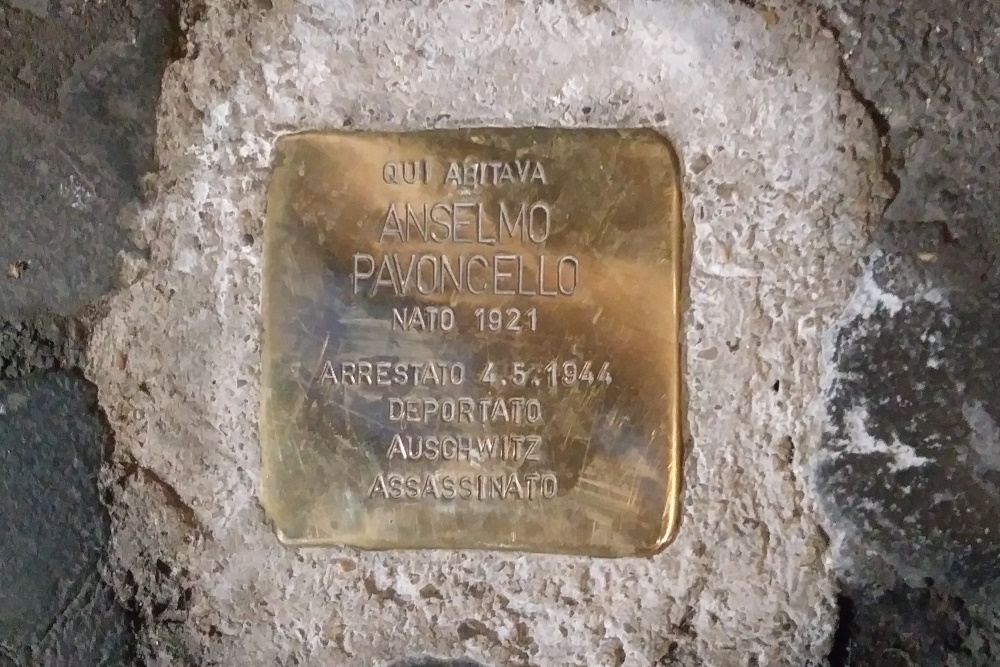Stumbling Stones Via della Reginella 10
These stumbling stones (stolpersteine or pietre d'inciampo) in Rome commemorate:
* Dora Piattelli, born 1897, arrested 16 October 1943, deported Auschwitz, dead 1 July 1944.
* Amadio Di Capua, born 1926, arrested 16 October 1943, deported Auschwitz, dead 1 March 1945.
* Zaccaria Di Capua, born 1899, arrested 16 March 1944, executed 24 March 1944, Fosse Ardeatine.
* Anselmo Pavoncello, born 1921, arrested 4 May 1944, deported, Auschwitz, murdered.
Background
Dora Piatelli and Zaccaria Di Capua married and had a son Amadio. She was arrested along with Amadio. They were held at the Roma Collegio Militaire for 2 days and then deported to Auschwitz, where they stayed until they were murdered – she in the summer of 1944 and he in the spring of 1945.
A week after Zaccaria Di Capua was arrested in 1944, an Italian resistance group (Gruppo di Azione Patriottica) killed 33 Nazis. In retaliation, at the Fosse Adreatine, the Nazis executed 335 Italians, including Zaccaria, who was not involved in that resistance action.
No information was found about Anselmo Pavoncello. His stolperstein was installed on 15 January 2019, seven years after the stolpersteine for the other three residents here.
"Stolpersteine" is an art project for Europe by Gunter Demnig to commemorate victims of National Socialism (Nazism). Stolpersteine (stumbling stones) are small, 10x10cm brass plaques placed in the pavement in front of the last voluntary residence of (mostly Jewish) victims who were murdered by the Nazis. Each plaque is engraved victim’s with the name, year of birth, and place (mostly a concentration camp) and date of death. By doing this, Gunter Demnig gives an individual memorial to each victim. One stone, one name, one person. He cites the Talmud: "A human being is forgotten only when his or her name is forgotten."
Do you have more information about this location? Inform us!
Source
- Text: Anne Palmer & Simon Armstrong
- Photos: Louise Cooper (1), Simon Armstrong (2)
- Memorie d’Inciampo
- CDEC Digital Library
- Stolpersteine.eu
Nearby
Museum
- Napoleonic Museum of Rome - Roma
- Museum Granatieri Di Sardegna - Rome
- Mussolini's Villa Torlonia - Roma
Point of interest
Monument
- Memorial Holocaust - Rome
- Memorial Vittorio Polacco Primary School - Rome
- Memorial Settimio Calò - Rome
Cemetery
- Tomb of the Unknown Soldier - Roma
- Commonwealth War Graves Testaccio Protestant Cemetery - Roma
- Commonwealth War Cemetery Rome - Roma






